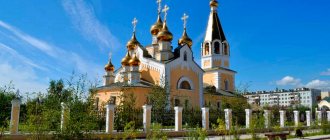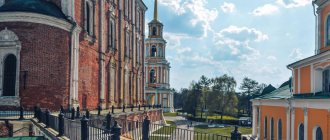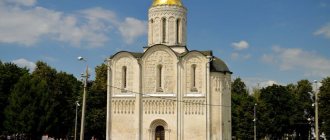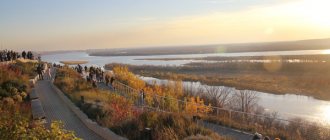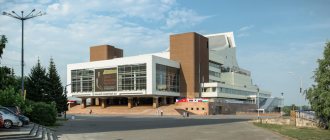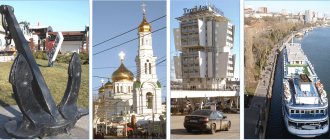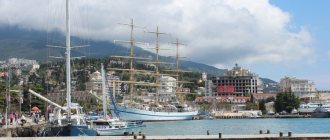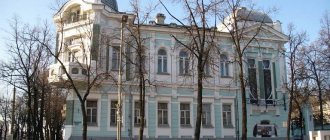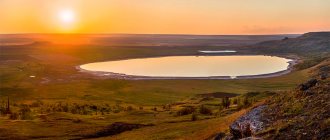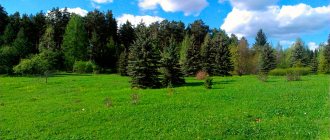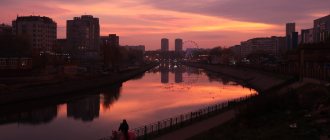Ski resort "Dynamo"
Here begins the “Health Trail” - a 25 km long trail running along the Barnaul Forest. This is a great place for sports. Citizens come to the ski resort in the summer to ride bicycles, run in the fresh air, and practice Nordic walking. Competitions and contests with prize drawings are often held here. But not only athletes come to the Health Track. Often - just for walks. At the Dynamo base there are bicycle rentals and places for picnics.
Park "Forest Fairy Tale"
The main place of attraction in “Forest Tale” is the Barnaul Zoo. This is a favorite vacation spot for children and adults. The pride of the zoo is the Amur tigers. Also in the enclosures you can see the Far Eastern leopard, emu, mouflon, foxes, Javan macaques, flamingos, porcupines, bears and other species of animals. The park is open daily.
According to visitors, the best time to visit the zoo is from 15:00 to 16:00, when staff feed the predators.
There is also an amusement area in the Forest Fairy Tale.
"Edelweiss"
This is one of the most popular parks in the city, where the UFO swing has become the most visited attraction. Their cabin is made in the form of a flying saucer.
Edelweiss has a large indoor racing track, a karting track and a large stage area, a shooting range, and a rope park. There are carousels and trampolines for little kids.
There are several cafeterias in the park with different menus. Here you can walk along picturesque alleys with beautiful flower beds.
Intercession Cathedral in Barnaul
Address: st. Nikitina, 137 Phone:
Built with donations from residents, it was consecrated in 1904. The wooden Church of the Intercession was replaced by a pseudo-Russian-style red brick temple.
There are four thrones in the temple:
- Protection of the Blessed Virgin Mary
- In the name of Prince Alexander Nevsky
- In the name of the healer Panteleimon
- In the name of Seraphim of Sarov
The inside of the temple is painted on dry plaster with oil paints. The basis of the painting was paintings on religious subjects by V. Vasnetsov, I. Kramskoy, M. Nesterov.
In 1939, after the demolition of the domed cross and bell tower, the cathedral premises were turned into a warehouse. Since 1943, the temple has been open to believers. Since the cathedral is the only one in the city, it was given the status of a cathedral.
"Sunny wind"
The park is famous for its attractions for children and adults. There are three dozen of them here. There are green areas for recreation, sports and outdoor games, food outlets, a stage area, and parking.
Various festivals and exhibitions take place. Children's groups and experienced artists perform on the park's stage every year. Mass events are held in the park.
Cultural guide to Barnaul
Children playing near the monument to Vasily Shukshin in Barnaul. Photo: A. Prozorov / photobank “Lori”
Monument to migrants to Altai in Barnaul. Photo: A. Kokoulin / photobank “Lori”
Old house in Barnaul. Photo: A. Litovchenko / photobank “Lori”
State Museum of the History of Literature, Art and…
Barnaul
Founded in 1989, the State Museum of the History of Literature, Art and Culture of Altai develops its activities in the field of literature, theater, cinema and music, as well as fine arts and folk art of Altai.
The 12 thematic halls of the museum display historical and cultural processes on the territory of Altai from Scythian times to the present day. The most valuable and unique exhibits in the museum’s collection are the personal collection of the writer, film director and actor Vasily Shukshin; foundation of the artist, public figure Nicholas Roerich and members of his family; personal fund of the writer Georgy Grebenshchikov; objects from the archaeological expeditions of Sergei Rudenko in Altai; collection of icons; collection of handwritten and early printed books; collection of musical instruments.
The museum hosts literary readings and cultural events aimed at popularizing the culture and art of Altai.
State Art Museum of Altai Territory
Barnaul
The State Art Museum of the Altai Territory, founded in 1958, is located in a building - an architectural monument of the 1930s.
A fundamental contribution to the research and educational activities of the museum was made by candidate of art history Larisa Iosifovna Snitko. She laid the foundation for the cataloging of the museum collection, the museum's publishing activities, and became the founder of the collection of folk art objects. In 1968, under her leadership, the first scientific research expedition to the Altai Mountains was organized. Since then, museum researchers have carried out more than 50 scientific expeditions to the regions of the region. In memory of Larisa Iosifovna, the museum hosts Snitkov art readings.
Currently, the museum has one of the largest collections in Siberia and the only one in the region of unique collections of Russian art of the 16th–21st centuries, a rich scientific archive and a specialized scientific library.
Museum "City"
Barnaul
The City Museum is one of the youngest museums in the city; it first opened its doors to visitors in 2007. It is located in the building of the former city hall, erected in 1914–1916 according to the design of the architect Ivan Nosovich.
The museum has permanent exhibitions that reveal the history of Barnaul from its founding to the present day: “Barnaul. From the origins to the end of the 18th century", "Barnaul of the 19th - early 20th centuries", "Barnaul of the 20th - early 21st centuries".
The museum tells about the history of the city through the lives of people who contributed to its development. Starting from the Ural industrialist Akinfiy Demidov, who founded the city, and to our contemporaries, among whom are mining officers and scientists, merchants and military men, builders and teachers.
Museum of Forensic Science of the Altai State…
Barnaul
The Museum of Forensic Science of Altai State University opened in 2014. The exhibition is located in a small room with glass cabinets containing bullets from all over the world and various weapons.
This is the only specialized museum of this kind in the Altai Territory, created at an educational institution. It became the first museum organized at Altai State University. The museum exhibition is based on the collections of the department’s teachers, in particular, the first head of the department of criminal law, process and criminology, Evgeniy Tikhonov.
The museum's collections contain many exhibits related to all aspects of the science of forensics. Here you will see photographs from the crime scene, bladed weapons and firearms, various physical evidence that was transferred to the department of criminal law, process and criminology, as well as unique collections on ballistics.
Altai Regional Drama Theater named after V.M. Shukshina
Barnaul
Altai Regional Drama Theater named after V.M. Shukshina is the oldest theater in Altai, where one of the largest theater groups in Western Siberia performs. It opened in 1921 as a result of the merger of the best professional theater workers into the troupe of the First State Theater in Barnaul.
The modern troupe includes 40 artists, among whom are theatrical luminaries, stage masters and a large group of talented youth. Six theater actors were awarded the high title “Honored Artist of Russia”, one was awarded the title “People’s Artist of Russia”.
From 1974 to the early 1990s, the theater actively staged performances based on the works of Vasily Shukshin. In 1991, the theater was named after this outstanding writer, film director and actor. Since 2009, the theater has annually included in its repertoire performances based on his works, such as “Strength of the Heart, Forbidden Pain,” “Until the Third Rooster,” “Prodigal Son,” “I Came to Give You Freedom.” The theater repertoire also includes the best examples of Russian and foreign classics and popular works of modern drama.
Altai Youth Theater
Barnaul
Altai Youth Theater named after. V.S. Zolotukhin was created in 1958 and was originally called the Altai Regional Theater for Young Spectators.
From 1997 to 2013, graduates of leading theater universities experimented on the theater stage, attracting the attention of young people and theater critics. The performances staged at this time breathed new life into the theater, including Pushkin’s “Little Tragedies” staged by Sergei Krasnoperts, Carroll’s “Alice in Wonderland” staged by Konstantin Kostin, Machiavelli’s “Mandrake” staged by Sergei Bobrovsky, “Black Dead Cat” based on Twain, directed by Anton Bezyazykov, “The Love for Three Oranges” by Gozzi, theatrical exercise “Dolls”, “Phaedra and Hippolyte” by Racine, directed by Andrei Zyablikov.
In 2013, the theater was named after People's Artist of the Russian Federation Valery Zolotukhin, who has been its artistic director since 2003.
Altai State Musical Theater
Barnaul
The Altai State Theater of Musical Comedy is the only professional musical theater in Altai. It was created in 1960 on the basis of the Biysk Music and Drama Theater.
The current repertoire includes many productions by the theater’s chief director Konstantin Yakovlev, which indicate a new period in the life of the creative team: the rock musical “S@baki”, the ballet evening “Geography of Love”, the theatrical performance for Victory Day “Bravo, entertainer!”, musical performance “Charley's Aunt”, fairy tales “Best Friend's Day”, “Beauty and the Beast”, “The Lion King”, “Ala-ad-din”, “The Snow Queen”, “The Ice Ring”, “The Nutcracker”, “Peter Pan” ", the mystical musical "The Blue Lady" (a new version of the legendary performance of 1980), the musical "Romeo and Juliet", the musical comedies "Baby Riot" and "Sorochinskaya Fair", the musical "Man of La Mancha", the legendary operetta "Silva".
Altai State Puppet Theater "Fairy Tale"
Barnaul
The Altai State Puppet Theater “Fairy Tale” presented its first performance “The Snow Maiden’s School” based on the play by Grigory Landau in 1964.
Directed by Ludwig Ustinov, theater director and Honored Artist of Russia and Khakassia, amazingly beautiful and kind fairy tales for children came out one after another: “Frost”, “The Scarlet Flower”, “The Frog Princess”, “Aladdin’s Magic Lamp”, as well as performances for adults “The Reluctant Doctor” by Jean Baptiste Moliere and “Thirty-three Happiness” by Oleg Bogaev.
The theater team conducts active touring activities in the region, annually introducing up to 60 thousand spectators to theatrical art, almost half of whom are village residents. During its existence, the theater took part in 11 international and 10 festivals in Siberia, the Urals and the Far East.
Nagorny Park
Experts recommend visiting Nagorny Park in the evening to admire Barnaul at night from above in a pleasant summer atmosphere.
The observation decks are connected by 30 flights of stairs. Five wide asphalt paths skirting the slope are convenient for walking and cycling. They have more than 60 benches on which you can look out over the city.
After sunset, the staircase is illuminated with hundreds of lights. Here, citizens admire Barnaul in the evening, and on the other side of the park there is a stunning view of the Ob River, the embankment and the New Bridge, illuminated at night.
Interesting monuments
Monument to Chaplin or sculptural group “A Movie is being Made”
Address: pl. Victory
On a free area in front of the Mir cinema, sculptor Eduard Dobrovolsky used metal to stop the frame of the film Circus. In the center of the composition is Charlie Chaplin, running away from a policeman who raised his baton, and a little further away, a lady, raising her hand in a commanding gesture, films the silent but expressive chase on camera.
Monument to T-34
Address: pl. Victory
On the alley in front of the Mir cinema on the day of the 50th anniversary of the Great Victory, a model of the T-34-85 tank was installed. This badge recognized the merits of Tank Industry Plant No. 77 (now Transmash), which during the war produced engines for these combat vehicles. The monument, as they say, is “in the theme” of Victory Square with the Memorial of Glory and the boulevard of the defenders of Stalingrad passing nearby.
Monument to V. M. Shukshin
Address: intersection of Shukshina and Yurina streets
Installed in the Leninsky district of Barnaul - it is interesting that the sculptor of the monument, Nikolai Zvonkov, also lives here. The monument, made in collaboration with Mikhail Kulgachev, was unveiled on the writer’s 60th birthday – July 25, 1989.
The writer's facial features, posture, and even the manner of wearing a shirt were carefully reproduced from his photographs. Later, the sculpture was raised onto a granite pedestal, and a park with red viburnum and mobile benches was laid out around it for the annual Shukshin Readings.
Monument to Viktor Tsoi
Address: Socialist Ave., 126
This monument was erected in front of the building of the Pedagogical Academy on November 20, 2010. A musician with a guitar seems to grow out of a stone pedestal, and the semicircle above his head symbolizes the rise of the “Star called the Sun.”
Monument to the Unhappy Lover
Address: Socialist Ave., opposite the entrance to the Pedagogical University.
The hero in retro style is anxiously waiting: “He will come or he won’t come?” Its appearance is typical of the 70s, the time of the youth of the sculptor of the monument, Eduard Dobrovolsky. Confusion prevailing over the joy of anticipation, a simple thin tie, a seemingly absurd flower in the hand evoke sympathy among those watching. This is probably why, contrary to the author’s wishes, the bench near the monument does not often become a meeting place for lovers, but tourists come to see it with pleasure.
Ob embankment
The embankment is connected by a wide staircase to Nagorny Park. You can climb along it to the giant letters “Barnaul”.
Here you can relax, admire the Ob River and the panorama of the city. There is a cafe, benches, shade canopies, lanterns and flowerpots. Festive events are also held on the embankment. Nearby is the River Station, where you can book a boat trip.
Alexey Smertin Sports Park
The name of the park speaks for itself: you can practice various sports here, from volleyball to workout. The Olympus Child Development Center, a football sports school, five training fields, the Beach outdoor swimming pool complex and grounds for beach sports. A festival site where major city and corporate events are held. There is also a Banquet Hall in the park. And along the walking alleys there is a Food Park truck for snacks.
In addition, the Sports Park is conveniently adjacent to the “Forest Fairy Tale”, so visitors can combine, for example, a holiday on the “Beach” with a trip to the zoo.
Museum "City"
Address: st. L. Tolstogo, 24 Phone: , (3852) 63-64-91 Website: museum-city.rf Opening hours: 10:00-18:00 (ticket office until 17:30), day off: Sunday, Monday Entrance fee: for adults – 35 rubles, for students and pensioners – 25 rubles, for schoolchildren and preschoolers – 15 rubles. Sightseeing tour: 65 rub./50 rub./30 rub. respectively.
The museum opened during the celebration of the 277th anniversary of Barnaul on September 1, 2007. The exhibitions of the city museum are dedicated to the main historical moments of the transformation of Barnaul from a mining village, first into a trading merchant city, then into a large industrial center.
The historical overview is built on the principle of Geniusloci (Genius of Place) - the development of the city is revealed through the fates of its outstanding inhabitants. The exhibitions tell about personalities from the founder of the city, Akinfiy Demidov, to modern scientists, mining officers, teachers and architects, who transformed the city, each in their own place.
Inspection of the exhibitions and excursions of the museum are complemented by fascinating lectures: “Temple architecture of Barnaul”, “The formation of the city’s medicine”, “History of charity”.
Sakharov Square
This is the very center of the city. The main city and all-Russian holidays are held here. Nearby is a small amusement park and a drama theater. There is a green area for walking, a fountain and a large granite staircase, where extreme cyclists and skaters love to take pictures, dance, and ride. And on the square itself they take kids on ponies and like to race roller skates.
Zero kilometer
Located opposite the regional government building. This is a place for walking, decorated with large flower beds and two fountains. There are benches. Here you can ride bicycles and rollerblades and have a good time with your family. And also take a photo at the “Zero Kilometer” itself - a beautiful exhibition with a vase and floor mosaic in the form of Zodiac signs.
Alexandra Kuznetsova
Photo: Andrey Kasprishin, from the website of the Barnaul administration, https://vk.com/club3437561, the Forest Fairy Tale Zoo, D. A. Churilova (https://ru.wikipedia.org), Sergei Peregudov
Altai State Museum of Local Lore
Address: st. Polzunova, 46 Phone: , 8 (3852)63-45-51 Website: www.agkm.ru Opening hours: 9:30-17:30, ticket office until 17:00, weekends: Monday, Tuesday, last Friday of the month is a sanitary day. Cost of entrance tickets (depending on the excursion): - for adults - from 70-100 rubles. - preferential - from 30-60 rubles. - social (children from 3-6 years old, disabled children and all groups, orphans, members of large families, WWII participants, conscripts) - from 30-70 rubles. — for children under 4 years old — free
This is the oldest local history museum in Siberia, whose exhibits clearly represent the history of the region from the 16th century to the present day. The opening of the departmental “Mining Museum” in 1823 marked the 100th anniversary of mining production in the Altai region.
Founders of the museum: Tomsk governor P.K. Frolov and Doctor of Medicine, Altai nature researcher F.V. Gebler provided maps of the Altai mountain ranges, drawings and models of production machines, books on mining and a collection of minerals that made up the first exhibition of the museum.
The costumes, weapons, idols and equipment of the shamans of the peoples of China, Siberia and North America that made up the first museum exhibition are still available for inspection today.
Famous travelers and scientists of the 19th century visited the museum with great interest: A. Brem, P.P. Semyonov-Tian-Shansky, A. von Humboldt. The museum's modern collection includes more than 150,000 items.
The collection of mining history is rich in museum rarities:
- “Snake Mountain” - a model of the Zmeinogorsk mine
- Model of a steam-atmospheric machine by inventor I.I. Polzunova
- Model of a coining machine and a set of coins made for the museum at the Suzunsky Mint
Very interesting:
Collection of the history of the Kolyvan stone-cutting factory, which includes a bowl made of gray porphyry for putting herbs (1815) and a vase made of dark purple porphyry (1952)
Archaeological collection with historical monuments of Altai from the Paleolithic to the Middle Ages
Ethnographic collection of materials from the traditional culture of Russian, Altai, German, Mordovian and other peoples of the region
